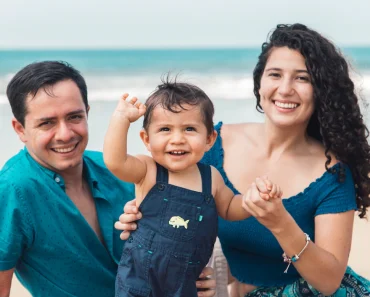Contents
- 1 How to Safely Reunite with Your Grandchild from CPS as a Stepparent: A Step-by-Step Guide
- 2 Tips for Reuniting with Your Grandchild in Stepparent Families
- 3 Supportive Role of Stepparents in Reunification
- 4 Creating a Safe and Stable Home Environment
- 4.1 How can a stepparent regain custody of their grandchild after CPS involvement?
- 4.2 What legal steps can a stepparent take to have their grandchild returned from CPS custody?
- 4.3 Are there any specific requirements or qualifications a stepparent needs to meet in order to regain custody of their grandchild from CPS? Please note that these questions are general examples and should be tailored to the specific circumstances of each individual case. It is recommended to seek professional legal advice for accurate information regarding such matters.
- 4.4 Related Posts
Welcome to Stepparent Magazine! In this article, we will provide valuable insights on how to get your grandchild from CPS. We understand the challenges you face as a stepparent, and we are here to support you through your journey. Follow our expert advice and unlock the necessary steps to reunite with your grandchild in the most effective way possible. Stay tuned for practical tips and resources that will empower you throughout the process.
How to Safely Reunite with Your Grandchild from CPS as a Stepparent: A Step-by-Step Guide
How to Safely Reunite with Your Grandchild from CPS as a Stepparent: A Step-by-Step Guide
Reuniting with your grandchild who has been placed under the care of Child Protective Services (CPS) can be a complex and emotional process. As a stepparent, it’s important to approach this situation with patience, understanding, and respect for the legal procedures involved. Follow these steps to safely reunite with your grandchild:
1. Understand the Legal Process: Familiarize yourself with the laws and regulations surrounding CPS cases in your jurisdiction. Each state may have different requirements and protocols for reunification.
2. Establish Communication: Reach out to CPS or the caseworker assigned to your grandchild’s case to express your interest in reunification. Make sure to provide them with all necessary information and documentation proving your relationship as a stepparent.
3. Attend All Court Hearings: Stay actively engaged in the legal proceedings by attending all court hearings related to your grandchild’s case. This demonstrates your commitment and involvement.
4. Follow Case Plan Recommendations: CPS may develop a case plan outlining specific steps for reunification. Adhere to these recommendations, which may include attending counseling sessions, completing parenting classes, or making changes to your living arrangements.
5. Maintain a Safe and Stable Environment: Create a safe and stable environment for your grandchild by addressing any concerns raised by CPS. This may involve making home modifications, ensuring proper supervision, or seeking professional help if necessary.
6. Build Trust: Foster a healthy relationship with your grandchild by consistently showing love, support, and understanding. Understand that trust may take time to rebuild after the experience with CPS.
7. Collaborate with Professionals: Work closely with the caseworker, therapists, and other professionals involved in your grandchild’s case. Share any concerns or progress, and seek their guidance when needed.
8. Focus on the Best Interest of the Child: Throughout the reunification process, prioritize the best interests of your grandchild. Be willing to make necessary changes and adjustments to provide a safe and nurturing environment for their well-being.
Remember, every CPS case is unique, and the timeline for reunification can vary. It’s essential to be patient, cooperative, and proactive in your efforts to reunite with your grandchild as a stepparent. Seek legal advice if you encounter any obstacles or have concerns during the process.
Tips for Reuniting with Your Grandchild in Stepparent Families
1. Understanding the CPS Process
When faced with a situation where your grandchild has been taken into custody by Child Protective Services (CPS), it is crucial to understand the process that follows. Familiarize yourself with CPS policies, procedures, and timelines. Know your rights as a grandparent, the legal grounds on which CPS can intervene, and the steps required for reunification.
It is important to communicate with CPS caseworkers openly and cooperatively while advocating for your grandchild’s best interests. Stay informed about the case, attend court hearings, and actively participate in any required services or evaluations. By understanding the CPS process, you can better navigate through it and work towards reuniting with your grandchild.
Supportive Role of Stepparents in Reunification
2. Building a Positive Relationship with the Biological Parent
As a stepparent, fostering a positive relationship with the biological parent of your grandchild can significantly impact the reunification process. Show respect, empathy, and willingness to collaborate, keeping the focus on what is best for the child. Actively listen to their concerns, demonstrate reliability, and support their efforts in meeting CPS requirements.
By establishing a strong bond and open communication with the biological parent, you can create a united front in addressing CPS concerns and working towards reunification. This cooperative approach conveys a sense of stability and commitment, reassuring CPS and the court that all parties involved are dedicated to the well-being of the child.
Creating a Safe and Stable Home Environment
3. Meeting CPS Requirements for Placement
To facilitate the reunification process, it is crucial to meet the requirements set forth by CPS for a safe and stable home environment. This includes ensuring the availability of enough living space, maintaining proper hygiene standards, having adequate food and clothing, and providing a nurturing and supportive atmosphere.
Engage in parenting classes, counseling, or therapy as recommended by CPS to acquire necessary skills and knowledge. Demonstrate your willingness and ability to provide a secure and loving home by addressing any concerns raised by CPS. By actively meeting these requirements, you demonstrate your commitment to creating an optimal environment for your grandchild’s return.
How can a stepparent regain custody of their grandchild after CPS involvement?
Regaining custody of a grandchild after involvement with Child Protective Services (CPS) can be a challenging process. Here are some steps a stepparent can take to work towards regaining custody:
1. Understanding the reasons for CPS involvement: It is crucial to have a clear understanding of why CPS became involved in the first place. This knowledge will help you address any concerns and rectify the situation.
2. Complying with CPS requirements: CPS typically provides a set of requirements that must be met for a stepparent to regain custody. These requirements may include attending parenting classes, completing therapy, or making changes in the home environment. It is important to fully comply with all these requirements to show your commitment to providing a safe and stable environment for the child.
3. Building a case: Gather evidence to demonstrate that you are a suitable caregiver. This may include obtaining character references from professionals involved in the child’s life, such as teachers, doctors, or counselors. Document any positive changes made since CPS became involved and highlight your ability to meet the child’s physical, emotional, and educational needs.
4. Working with an attorney: Consult with an experienced family law attorney who specializes in child custody cases. They can guide you through the legal process, help you understand your rights, and present your case effectively in court.
5. Attending court hearings: Be prepared to attend all court hearings related to the custody case. Present yourself professionally, provide honest and concise answers to any questions asked, and demonstrate your genuine concern for the child’s well-being.
6. Promoting a healthy relationship with the child: Maintain regular contact and involvement with the child throughout the process. Show that you have established a positive and nurturing bond. It is essential to demonstrate your commitment to being a stable presence in the child’s life.
7. Cooperating with CPS: Work collaboratively with CPS and follow their guidance. Show your willingness to cooperate, keep them informed of any changes or progress, and address any concerns they raise promptly.
Note: Each case is unique, and the process of regaining custody may vary depending on the specific circumstances. It is advisable to seek professional legal advice tailored to your situation.
What legal steps can a stepparent take to have their grandchild returned from CPS custody?
If a stepparent wants to have their grandchild returned from CPS custody, there are several legal steps they can take:
1. Hire a family law attorney: It is important to consult with an experienced family law attorney who specializes in child custody cases. They can guide you through the legal process and provide you with the best advice based on your specific situation.
2. Gather evidence: Collect any evidence that supports your claim that the child should be returned to your custody. This may include documents, photos, testimonies, or any other relevant information that demonstrates your ability to provide a safe and stable environment for the child.
3. Attend court hearings: Be present at all court hearings regarding the custody of the child. It is crucial to participate in the legal proceedings and express your concerns and desires to the judge overseeing the case.
4. File a motion for custody: Your attorney can help you file a motion for custody with the court. This will formally request the court to grant you custody of the grandchild.
5. Participate in the CPS investigation: Cooperate fully with the Child Protective Services (CPS) investigation. Provide any necessary information, complete required assessments, and comply with any reunification plans they may have in place.
6. Establish a strong relationship with the child: Show your commitment and dedication to the child by maintaining a positive and healthy relationship. Spend quality time together, offer support, and prioritize their well-being.
7. Show willingness to work with CPS and the biological parents: Demonstrate to CPS and the biological parents your willingness to collaborate and work towards a resolution that is in the best interest of the child. This can involve attending therapy sessions, counseling, or parenting classes as recommended.
Remember, every case is unique, and the legal process can vary depending on the jurisdiction. It is important to rely on the guidance of your attorney and follow the instructions provided by the court.
Are there any specific requirements or qualifications a stepparent needs to meet in order to regain custody of their grandchild from CPS?
Please note that these questions are general examples and should be tailored to the specific circumstances of each individual case. It is recommended to seek professional legal advice for accurate information regarding such matters.
In order for a stepparent to regain custody of their grandchild from Child Protective Services (CPS), there are several factors that may come into play. However, it is important to note that the specific requirements and qualifications can vary depending on the jurisdiction and the circumstances of the case.
1. Legal Standing: The stepparent must establish legal standing to seek custody. This typically requires being married to the child’s biological or adoptive parent or having legal guardianship over the child.
2. Good Relationship with the Child: The stepparent must demonstrate a positive and healthy relationship with the grandchild. This can include providing emotional support, meeting the child’s needs, and actively participating in their upbringing.
3. Ability to Provide a Stable Environment: The stepparent must be able to prove that they can provide a stable and safe home environment for the child. This includes factors such as adequate housing, financial stability, and a suitable caregiving arrangement.
4. Parental Fitness: CPS may assess the stepparent’s fitness as a parent, taking into consideration factors such as mental and physical health, history of abuse or neglect, criminal record, substance abuse issues, etc. It may be necessary to undergo evaluations or assessments to determine parental fitness.
5. Best Interests of the Child: The primary consideration in any custody determination is what is in the best interests of the child. The court or CPS will assess various factors such as the child’s relationship with both parents, stability, continuity, and any potential risks or dangers in each living arrangement.
6. Supporting Documentation: The stepparent will need to provide documentation and evidence to support their case, including any relevant court orders, custody agreements, character references, and any other pertinent information that supports their claim for custody.
It is important to consult with an experienced family law attorney who specializes in child custody cases to navigate the legal process effectively and ensure the best possible outcome. They can provide guidance based on the specific circumstances and jurisdiction involved.
In conclusion, navigating the complex process of getting your grandchild back from CPS as a stepparent can be overwhelming, but it is not impossible. Patience, perseverance, and knowledge are key to success. It is crucial to maintain open lines of communication with CPS, build a strong support network, and advocate for the best interests of your grandchild. Remember, legal counsel and guidance are often necessary to navigate the intricate system effectively. Through determination and a steadfast commitment to your grandchild’s well-being, you can work towards reunification and create a loving and stable environment for their future.







